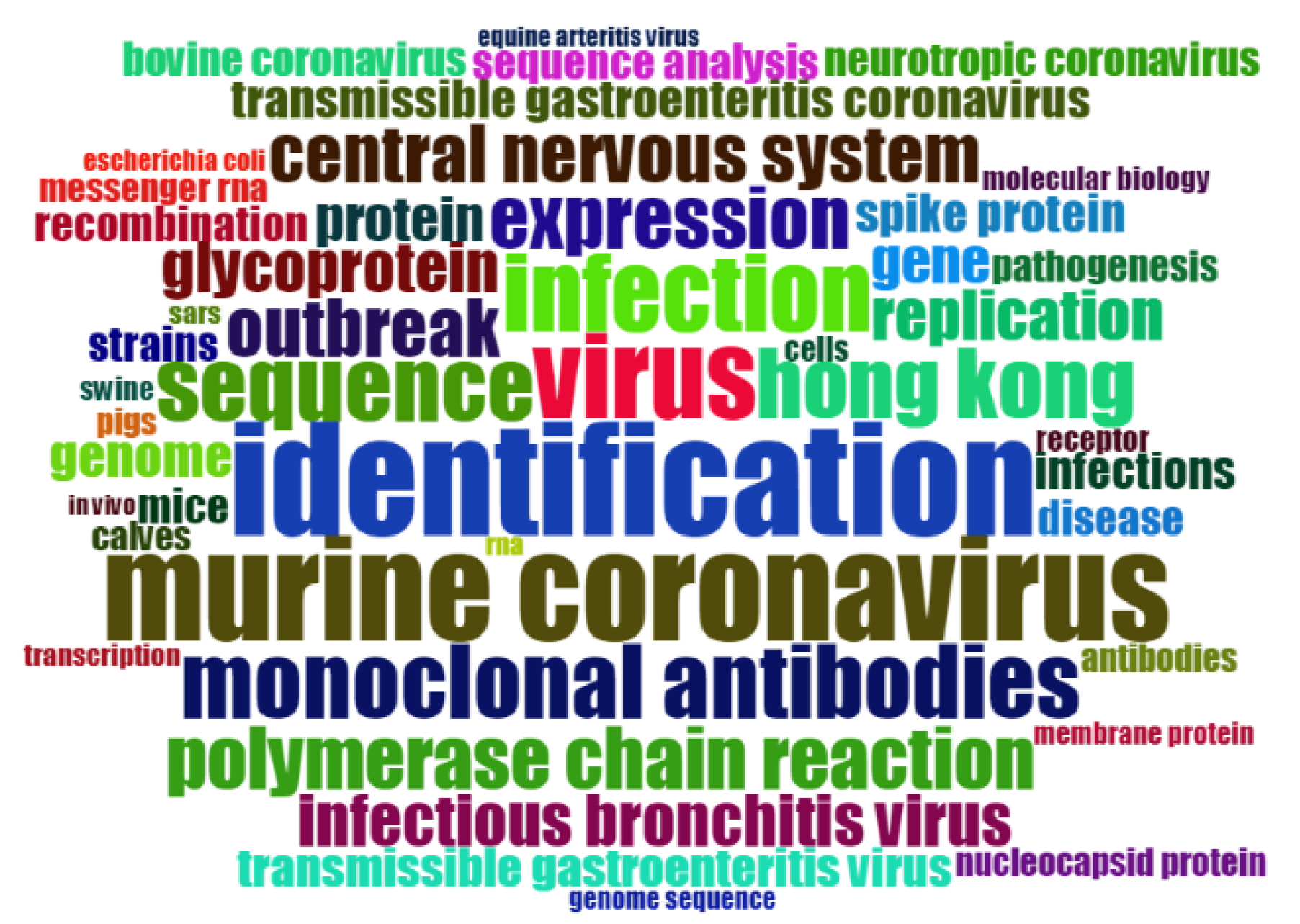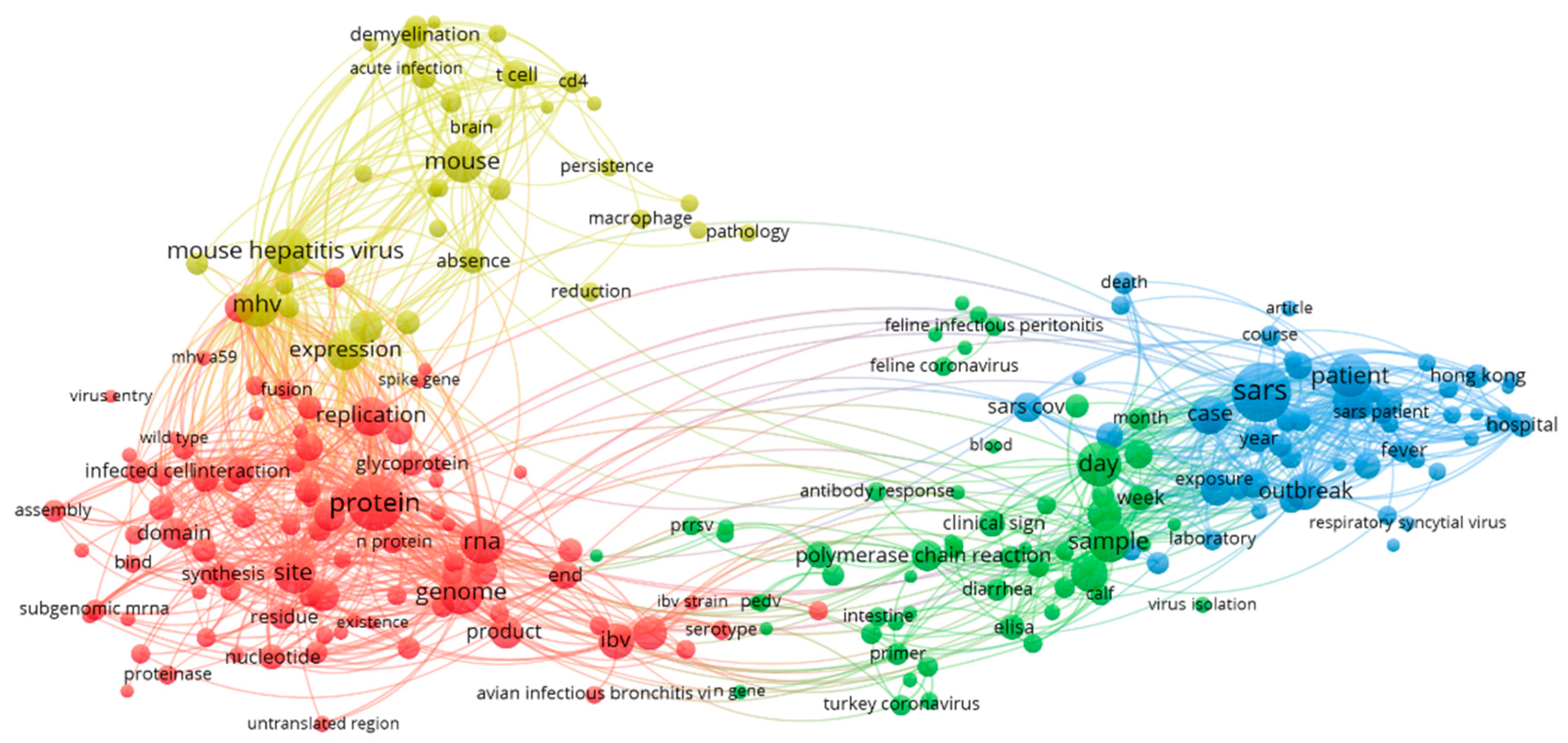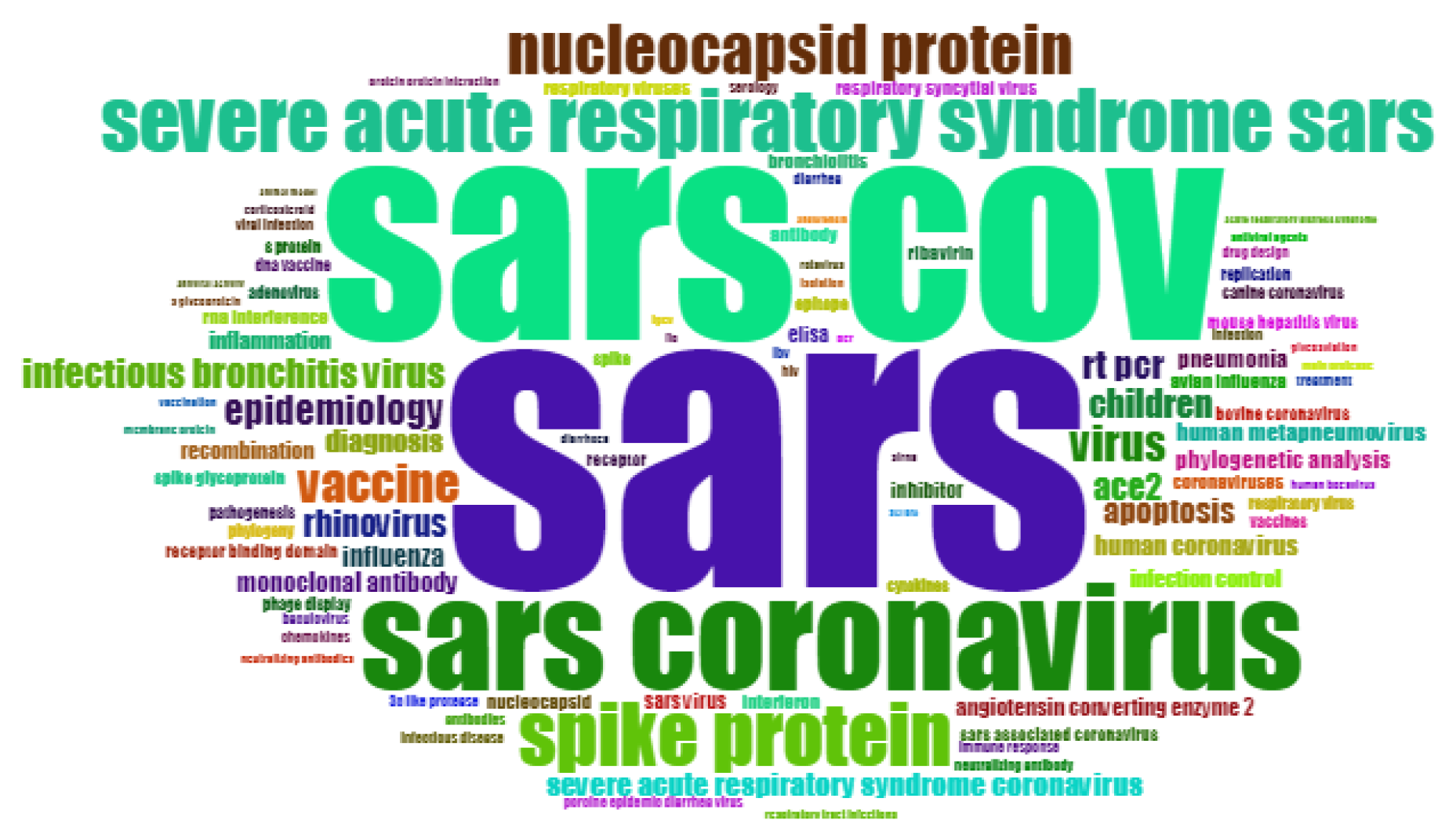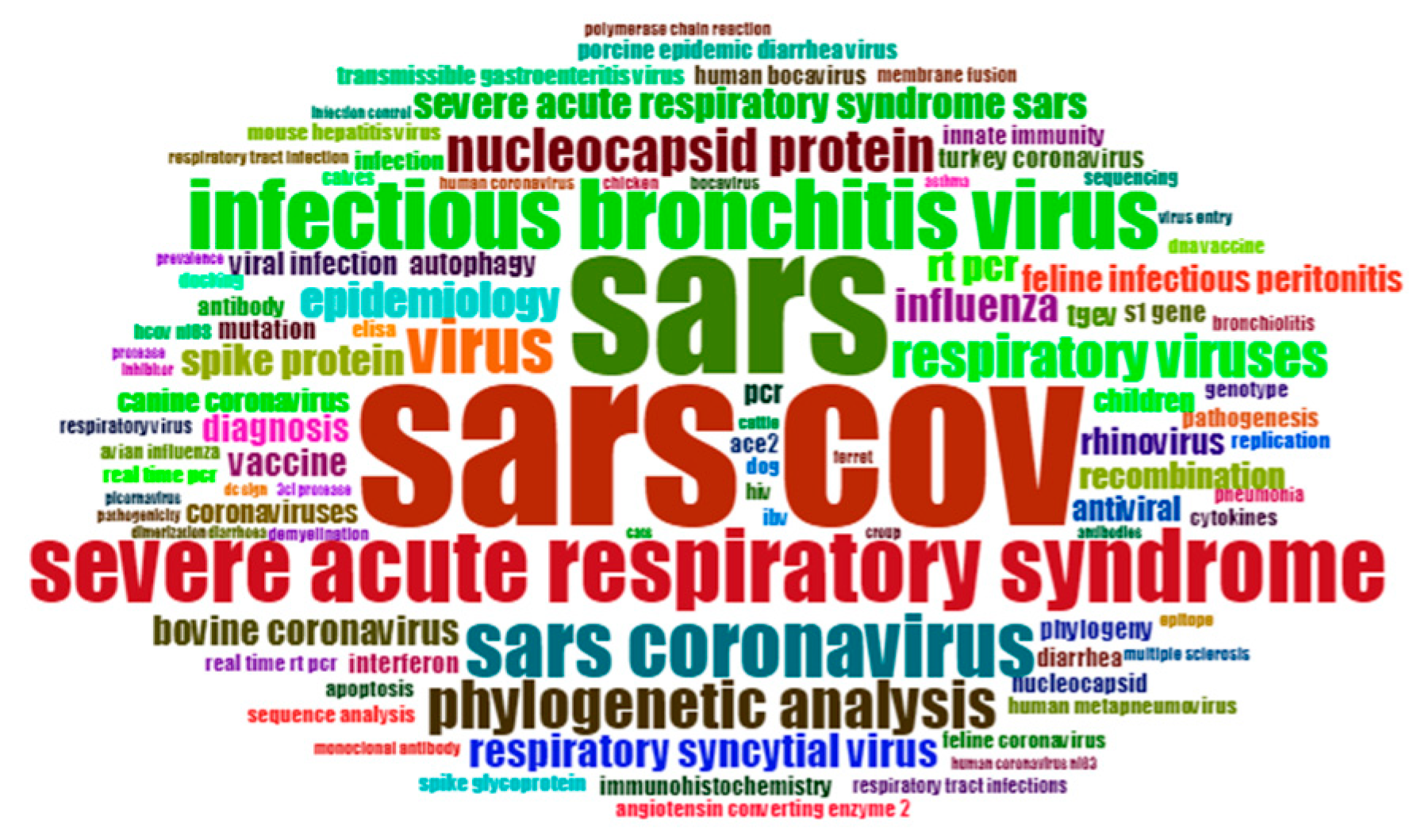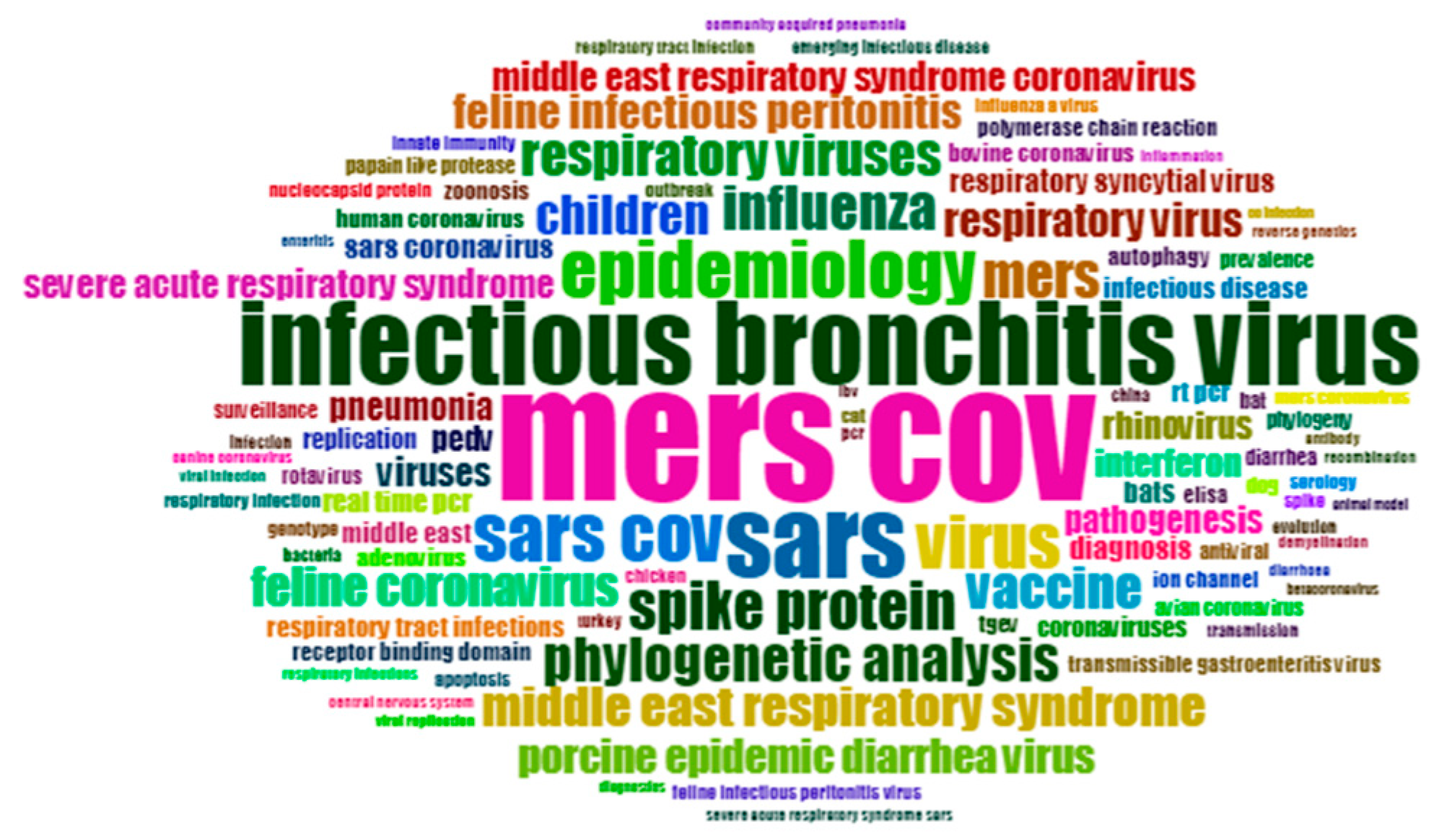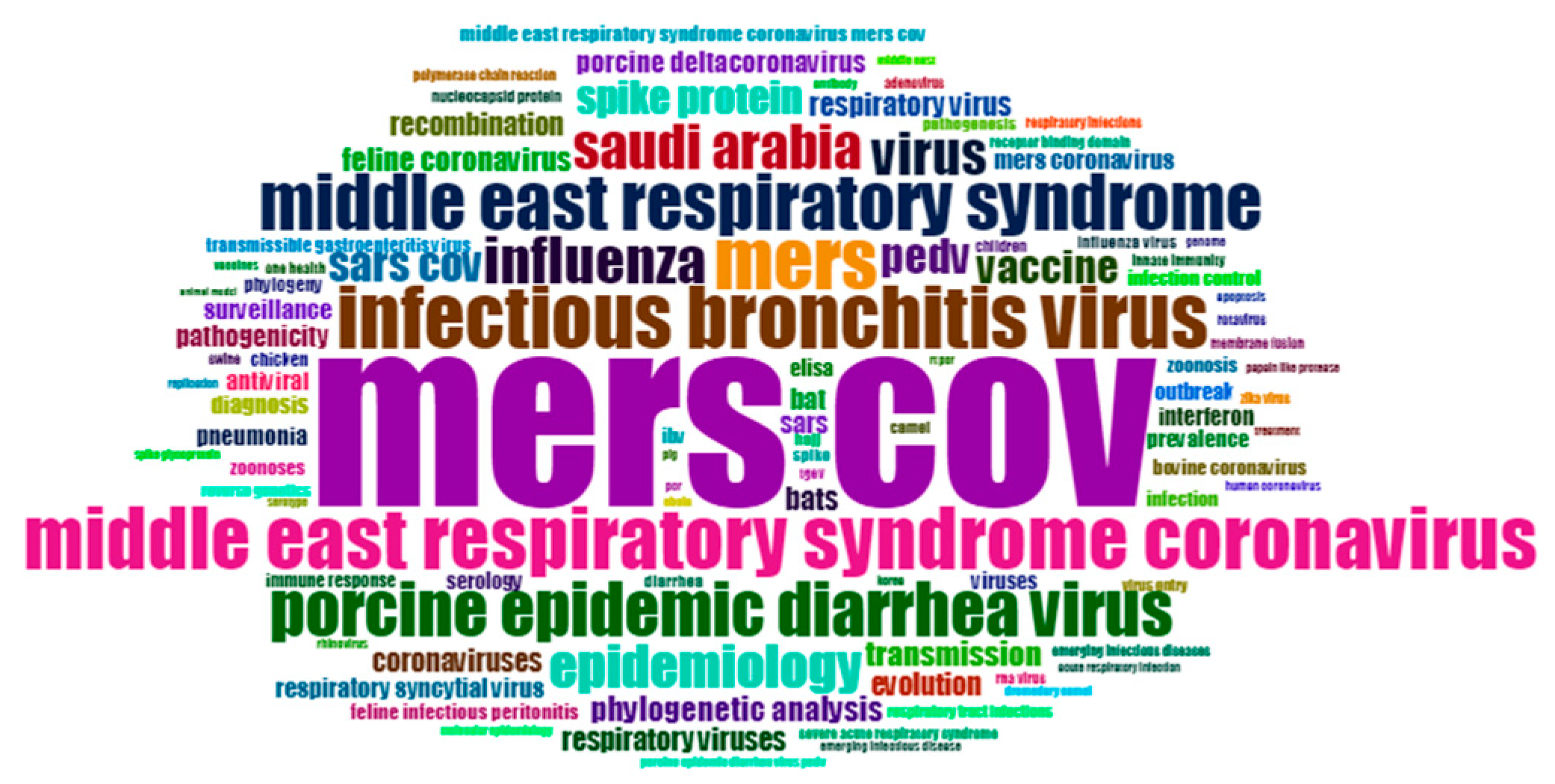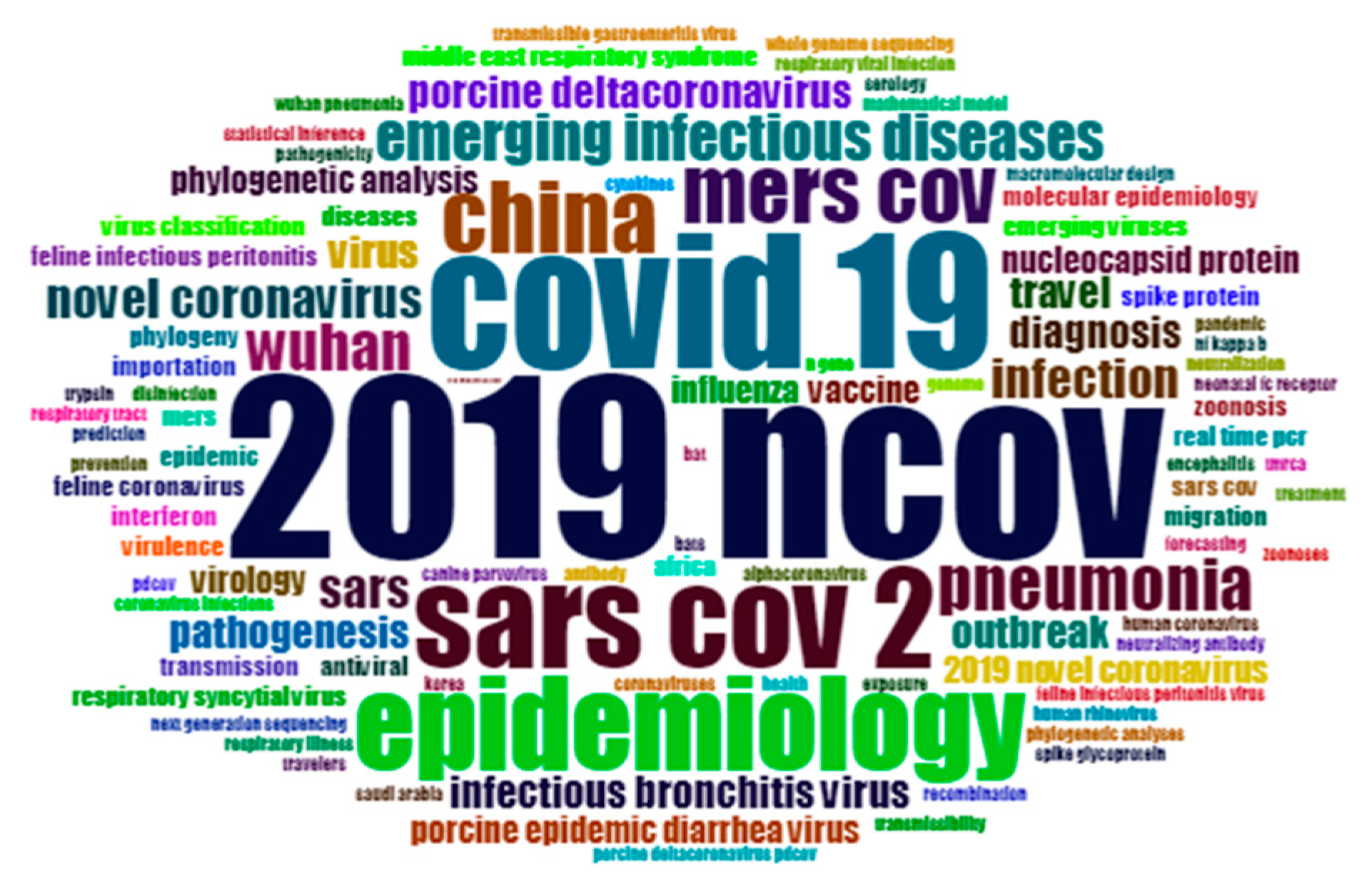1. Introduction
The coronavirus disease COVID-19 was declared a pandemic by the World Health Organization (WHO) on the 11th of March 2020, within less than three months after its first report in Wuhan, China in late December 2019 [
1]. The numbers (infected people, death, number of new cases, among others) are increasing on a daily basis. From China, the hotspots shifted first to Europe and then to the USA. Many countries have declared indefinite to time-bound lock downs, with severe restrictions on in-country as well as international travel. Tremendous pressure is mounting on countries’ health care systems and health care professionals are also becoming direct victim of the virus in many cases, with reported deaths in several countries.
Three major characteristics of COVID-19 are: (1) high rate of spread, (2) aged and low immunity people are more vulnerable to be infected, and (3) differential recovery rates in different countries [
2]. While the urgent need is to develop the appropriate curative medicines and vaccines, there are different types of ongoing research on this topic. Pandemic risk is not just a medical issue, but has strong socio-economic, behavioral, psycho-social, governance and technological implications. Of course, virology, medical science, epidemiology are the core for addressing the key issue. However, these also need to be linked to other issues. Governance and decision-making related to pandemic risk are important points, which need to be discussed more.
Incorporation of pandemic/biological hazard risk in the Sendai Framework of disaster risk reduction is important [
3], and it is mentioned that the global framework can be well linked with the health emergency and disaster risk management (H-EDRM) concept. We also see different governance-related decisions in East Asia which were effective in different stages of the pandemic [
2]. Similarly, different innovative technologies have been used for pandemic response in different countries. A comprehensive review of the technology and its innovative use for serving different types of services during lock-down is yet to be done. People’s behavior is one of the key aspects of pandemic response. Risk perception, understanding and communication are also linked to behavior change. New research would come out on the behavior as well as social changes during pandemics. There are also tremendous economic implications of the pandemic, which can be observed at global, regional, national and local levels. Some of the economic issues are also linked to the local social issues, especially for micro-, small- and medium-enterprises (MSMEs).
Keeping this in mind, this paper makes a modest attempt to analyze past and current research trends related to coronavirus over a period of 20 years. Detailed analysis and discussions are provided from the papers published in last three months. The analysis shows some gaps and issues, which needs to be linked to the global research road map of WHO [
4].
2. WHO Research Road Map
On 30 January 2020, following the recommendations of the Emergency Committee, the WHO Director General declared that the COVID-19 outbreak constituted a Public Health Emergency of International Concern (PHEIC). World experts on COVID-19 met at the WHO headquarters in Geneva from the 11 to 12 February 2020, to assess the current level of knowledge about the new virus, agree on critical research questions that needed to be answered urgently and ways to work together to accelerate and fund priority research that can contribute to curtail this outbreak and prepare for future outbreaks [
4]. The global imperative for the research community is to maintain a high-level discussion platform which enables consensus on strategic directions, nurtures scientific collaborations and, supports optimal and rapid research to address crucial gaps, without duplication of efforts. Experts identified key knowledge gaps, and research priorities and shared scientific data on ongoing research, thereby accelerating the generation of critical scientific information to contribute to the control the COVID-19 emergency. Eight immediate research actions were proposed as follows:
- -
Mobilize research on rapid point of care diagnostics for use at the community level
- -
Immediately assess available data to learn what standard of care approaches from China and elsewhere are the most effective.
- -
Evaluate as fast as possible the effect of adjunctive and supportive therapies.
- -
Optimize use of protective equipment and other infection prevention and control measures in health care and community settings.
- -
Review all evidence available to identify animal host(s), to prevent continued spillover and to better understand the virus transmissibility in different contexts over time, the severity of disease and who is more susceptible to infection.
- -
Accelerate the evaluation of investigational therapeutics and vaccine using “Master Protocols”.
- -
Maintain a high degree of communication and interaction among funders so that critical research is implemented.
- -
Broadly and rapidly share virus materials, clinical samples and data for immediate public health purposes.
The target of the WHO Research Road Map was: (1) to ensure that the affected people gets proper diagnosis and optimum care, and (2) to support research priorities that lead to development of global research platform. A cross-cutting, inter-disciplinary approach was suggested which looks at the ethical aspects, as well as practical implications with international solidarity.
Nine specific thematic areas were suggested as follows:
- -
Virus: natural history, transmission and diagnostics.
- -
Animal and environmental research on the virus origin, and management measures at the human-animal interface.
- -
Epidemiological studies.
- -
Clinical characterization and management.
- -
Infection prevention and control, including health care workers’ protection.
- -
Candidate therapeutics research and development
- -
Candidate vaccines research development
- -
Ethical considerations for research.
- -
Social sciences in the outbreak response.
Thus, broadly speaking there are three categories of research areas: (1) Science and technology (related to the virus, animals, the environment and epidemiology); (2) Governance and management (clinical management, health care worker’s protection, ethical issues); (3) Social and behavior issues (people and citizen’s response behavior).
In their recent book, [
5] has argued the challenges and gaps in H-EDRM. The WHO pointed out in 2019 that H-EDRM remains as a fragmented nascent field, and needs to be developed as a coherent enterprise. Key challenges include non-alignment of research tools, lack of a strategic overarching research agenda, sub-optimal development of multisectoral and interdisciplinary approaches, absence of the science-policy-practice nexus, deficiency in standardized terminology, and meagre coordination among stakeholders [
6]. It is interesting to note that the road map of WHO for COVID-19 makes no mention of H-EDRM. This issue will be discussed later.
3. Methodology
To understand the research trends, the Web of Science core collection database was used to search for SCIE and SSCI papers related to coronavirus published in 2000–2019. The search formula was defined as “TS = Coronavirus”, and the language was set to English. In November 2002 Severe Acute Respiratory Syndrome Coronavirus (SARS-CoV) broke out in Guangdong, China, and became an acute epidemic in 2003. Middle East Respiratory Syndrome Coronavirus (MERS-CoV) is reported in Saudi Arabia in 2012 and has since spread to different countries.
In this analysis, twenty years (2000 to 2019) have been broken into five time slices: 2000–2003, 2004–2007, 2008–2011, 2012–2015, and 2016–2019. See
Table 1 for the main information about the publication situation in each time period.
In order to analyze the evolution characteristics of coronavirus research topics over time, a word cloud was used to reflect the dominant topics during each period. A ‘word cloud’ is a visual representation of word frequency. The more commonly a term appears within the text being analyzed, the larger the word appears in the generated image. Word clouds are increasingly being employed as a simple tool to identify the focus of written material [
7]. Also, co-word analysis [
8,
9,
10] was used to construct a co-occurrence map to reveal the research hotspots and evolution of each time slice. Co-word analysis is used in a longitudinal framework which allows us to analyze and track the evolution of a research field along consecutive time periods [
8]. Additionally, it develops a performance analysis of specific themes using different basic bibliometric indicators.
Author keywords are a list of terms that authors believe best represent the content of their papers. In the following study, the hot topics of each time slice are visualized by building the word cloud of author keywords. Since titles and abstracts can interpret the contents of paper more comprehensively than keywords, terms extracted from titles and abstracts are used to construct the co-word map by VOSviewer and the topic clusters of each time slice are analyzed based on the co-word map.
4. Research Trends Until 2019
4.1. Time Period: 2000–2003
From 2000 to 2003, the frequency of SARS occurrences was 141, and the total cited frequency was 11,723. That is to say, the SARS research in 2003 has received widespread attention worldwide (
Figure 1). In addition, the research frequency of HEPATITIS (a type of disease) during this period is also very high, 65 times, and the total cited frequency is 2544. The research on HEPATITIS is basically based on Mouse. From the statistical results, the hot topics in 2000–2003 shown in
Table 2.
There are two papers cited over 150 times during 2000–2003, one is written by Luo et al. (2000) published in Journal of Virology, titled “Retargeting of coronavirus by substitution of the spike glycoprotein ectodomain: crossing the host cell species barrier”. The other is written by Lane et al. (2000) also published in Journal of Virology, titled “A central role for CD4(+)T cells and RANTES in virus-induced central nervous system inflammation and demyelination”.
VOSViewer is adopted to construct the terms cooccurrence map. Terms are extracted from the title and abstract fields, the minimum number of occurrences of a term is set as 10, and a relevance score is calculated for each term. Based on the score, the 60% most relevant terms are selected to build the cooccurrence map (
Figure 2). Blue clusters are studies of SARS cases, and the red clusters are studies of proteins and genes. The yellow clusters are studies of mouse hepatitis; and the green clusters are studies of antibody chain reactions. The analysis shows a strong presence of red clusters (protein and gene). The inter-disciplinary nature of the research, which is required, may not be that strong.
4.2. Time Period: 2004–2007
From 2004 to 2007, SARS has become a research focus and focus, with 977 occurrences and 29,584 total citations (
Figure 3).
“Protein” occurred 490 times with 14,994 citations, of which “spike protein” appeared 184 times and was cited 7155 times. In addition, “patients” appear 137 times, with 5108 citations, “nucleocapsid” appears 120 times, and its frequency of citations reached 3622 times. The hot topics in 2004–2007 extracted from the statistical results are shown in
Table 3. It is noted that there are seven articles that were cited more than 500 times between 2004 and 2007. The information is shown in the
Table 4.
The term cooccurrence map are shown in
Figure 4. Red clusters are researches on hospital case detection. The green cluster is the study of virus structure and replication and interaction after invading the human body. Yellow clusters are for phylogenetic analysis; and blue clusters are the first-body binding domains and immunodeficiency studies in mice. There is a definite high concentration of red cluster (hospital case detection), followed by green (virus structure and replication and interaction).
4.3. Time Period: 2008–2011
From 2008 to 2011, research on SARS did not decrease, with 332 occurrences and a total of 6961 citations. In addition, “severe acute respiratory syndrome” appeared more than 200 times, with a total of 5000 citations; “bronchitis” appeared 98 times, with a total of 2933 citations; “children” appeared 69 times, and a total of 2933 citations (
Figure 5). The topic trends of 2008–2011 are illustrated in
Table 5. During 2008–2011, there were four hot papers with over 400 citations, and the information is shown in
Table 6.
The term cooccurrence map of 2008–2011 publications is generated in
Figure 6. The red cluster is the study of protein structure and mechanism, and blue clusters are used to study the immune response to viruses in mice and anchors. Green cluster is the study of diagnosis and treatment of cases and children, and the yellow cluster is a phylogenetic analysis of epidemic dysentery using chickens and dogs. Here, a strong concentration is found in green cluster (diagnosis and treatment of cases and children), followed by red cluster (protein structure and mechanism).
4.4. Time Period: 2012–2015
From 2012 to 2015, MERS-COV is the most prevalent topic, with 320 occurrences and cited 13,882 times. “SARS” occurred 161 times and was cited 3359 times. “Infectious bronchitis virus” occurred in 113 papers with 1815 citations (
Figure 7). During this period, keywords including “epidemiology”, “respiratory viruses”, “spike protein”, “influenza”, “phylogenetic analysis”, “vaccine” and “children” are also hot topics, with over 30 occurrences. The trending topics of each year during 2012–2015 are shown in
Table 7. During 2012–2015, there are four papers which were cited over 400 times, (
Table 8).
The terms extracted from title and abstracts of 2012–2015 publications on coronavirus are used to build the cooccurrence map shown in
Figure 8. Red clusters are experiments on mouse proteins and RNA synthesis in mice and blue clusters are phylogenetic analysis of infectious bronchial virus (IBV), porcine epidemic virus (PEDV), cats, dogs, and bats. Green clusters are case studies. It was interesting to note that the green clusters have more concentration, which are on case studies.
4.5. Time Period: 2016–2019
During 2016–2019, it can be seen from
Figure 9 that MERS-COV is still the hot issue, occurring 493 times, and cited 4065 times according to the statistical results. “Infectious bronchitis virus” occurred 151 times with 856 citations. “Porcine epidemic diarrhea virus” is also a hot topic in this period, with 74 citations. The most frequent topics during 2016–2019 also included “Saudi Arabia”, “epidemiology”, “pedv”, “SARSCov”, “vaccine”, “spike protein” and “phylogenetic analysis”, with over 35 occurrences, respectively. The trending topics of each year during 2016–2019 are shown in
Table 9. There are five papers cited over 110 times during 2016–2019 (refer to
Table 10).
The term cooccurrence map of 2016–2019 is shown in
Figure 10. The red clusters are studies on the expression and replication of viral enzymes in recipient cells, human immunodeficiency virus, among others. Green clusters are research on patients, hospitals, children and health. Blue clusters are studies of vaccines, virus strains, and the yellow clusters are researches using polymerase chain reaction by animals. Here also, important issue is the increase of green clusters which are on patients, hospitals, children and health.
4.6. Summary of Research Trends: 2000–2019
From 2000 to 2019, there are two main research hotspots: one is about the structure, expression and interaction of the coronavirus after entering the human body; the other is about the case of patients, including children (
Figure 11). Studies on gene expression, interactions and structural changes after the virus invades the human body are mainly focused on the development of antibodies and vaccines, animal experiments, virus mutations and activity changes; Medical research on patients with coronaviruses is mainly focused on patient immune response, diagnosis and treatment.
From the time series analysis, it is observed that: public safety incidents affected scientific output and research topics, as observed after SARS and MERS. This may be an obvious increase in terms of focus on research topics. In addition to SARS and MERS, there are a few other types of coronavirus research. Whether these viruses will have a profound impact on humans needs further study.
Table 11 shows that in the five time periods, research on patients with coronavirus has been a hot spot, and many scholars have conducted research on patients’ symptoms and diagnostic methods, as well as cases of different ages, especially children; In the field of biomedicine, mice are used as test objects, focus on the interaction with cells and virus replication after the virus enters the organism. Spike protein and structural changes of virus, immune reaction, T-cell study as well as antibody development are hot topics after SARS outbreak after 2003. It is worth noting that the study of phylogenetic analysis based on spike protein sequences has become a hot spot in 2012–2019. In the study of coronavirus from 2003 to 2019, in addition to SARS and MERS, IBV, PEDV and mouse hepatitis have also been studied by many scholars.
5. Research Trend in 2020
The same methodology was used for 2020 analysis as well. The Web of Science core collection database was used to search SCIE and SSCI papers related to coronavirus published since 2020. The search formula was defined as “TS = Coronavirus” and the language was set to English. The main information of the publication is shown in
Table 12.
Since the outbreak of the COVID-19 in late 2019, a total of 384 papers have been published. Epidemiological knowledge is adopted to study infection of the virus. Thus, epidemiology and emerging infection diseases become two prominent key words after the names of the virus like 2019ncov, covid19, SARScov2 among others. It is to be emphasized here that in several virology/epidemiology papers, SARS-COV2 refers to the virus which caused the disease, and the disease itself is referred as COVID-19 or 2019cov. In order to analyze the trend of COVID-19 research, Keyword Plus (provided by Web of Science) and author keywords are both adopted to build the trend map (
Figure 12) based on the logarithm of keyword occurrences. It should be noted that as keyword plus illustrated, besides acute respiratory syndrome, MERS, replication and expression, a small cluster including pathogenicity, influenza, diarrhea, respiratory syndrome, RIG-I, syncytial virus and crystal-structure shows an aggregate status. Author keywords reveal that studies on virus, pathogenesis, outbreak, travel and porcine delta coronavirus are linked together, and shows a continuing trend. Five papers cited over 40 times are shown in
Table 13.
Figure 13 shows the term cooccurrence map. Red clusters represent research on proteins and cellular genes. Green clusters represent research on COVID-19 case outbreaks. Yellow clusters represent studies of infection history and symptoms, while blue clusters represent research on respiratory viruses.
As can be seen from the green cluster, the research on COVID-19 has attracted international attention. The author keywords reveal that besides China, other countries include the United States, Canada and Thailand. Fever and cough are the main symptoms of COVID-19, so “fever” and “cough” appear more frequently in the author keywords. In addition, population migration has played a huge role in spreading the virus, so isolation is an effective means to limit the spread of the virus. The terms mouse and pig in the red cluster are receptors of coronavirus and seem to be used for medical tests. Other keywords also include “cell”, “protein”, “gene” and “pathogen”.
From the currently published papers, it is observed that the research on COVID-19 mainly includes epidemiological characteristics, virus traceability studies, early transmission, mode and modeling analysis of COVID-19 predicting the spread and trend of the epidemic, clinical characteristics of COVID-19, diagnosis and treatment also attracted wide attention. The development of antibodies and vaccines will be of great concern. As of 6 May 2020, the number of people infected with COVID-19 has exceeded 3.8 million globally. The global and local economies are highly affected, and socio-economically vulnerable people like daily wedger are at high risk.
6. Discussion and Way Forward
As per [
11], experts recognized that an important amount of information is available just three months into the outbreak, there are still concerns about knowledge gaps and lack of clear evidence to support some interventions. The importance of strengthening capacity was highlighted in the research roadmap meeting in February 2020. Integration of research activities in the response to outbreaks and the lessons learnt on SARS, Ebola, Lassa fever, and Nipah have led to a prompt research response now. Participants emphasized that as we mobilize the research community for COVID-19, concerted efforts should be made to facilitate the sustainment of this capacity to support other ongoing or future outbreaks across the world. On the 26th of March, WHO issued six prioritized strategies, to be undertaken by governments to cope with the pandemic. The strategies were as follow: (1) Expand, train and deploy health-care workers; (2) Implement systems to find suspected cases; (3) Ramp up production of tests and increase availability; (4) Identify facilities that can be transformed into coronavirus health centers; (5) Develop plans to quarantine cases; and (6) Refocus governments on suppressing the virus [
11]. The document also identified eight knowledge gaps as follows: (1) human animal interface, (2) clinical consideration, (3) vaccine, (4) behavior and education, (5) transmission, (6) therapeutics, (7) healthcare workers, and (8) ethical considerations.
In its analysis, [
3] calls for an international protocol of pandemic response, where similar standards are processes are maintained. That needs more research and continued international dialogue. Governance become a key challenge in many countries, and not that much research is conducted on pandemic governance and needs to be considered as a core research gap. In the context of governance the H-EDRM [
12], which was described earlier can provide a basic framework. Incorporation of pandemic risk and biological hazards need to be incorporated in the Sendai Framework national implementation in respective countries, which seems to be a gap area. India is one exception, where the National Disaster Management Act (Law) was enacted country wise to respond to COVID-19 for the first time since the promulgation of the law in 2005. Thus, there seems to be a strong gap of incorporation of biological hazards in disaster response, recovery and long-term preparedness. New research is required in the areas of supply chain management, business continuity planning (BCP) and short to medium term response and recovery planning. We also did not notice much research on the risk assessment methodologies, which is an integral part of the disaster response and risk reduction. Multi-disciplinary research incorporating public health, disaster risk reduction, economics of pandemics, social psychology, anthropology, sociology, psychology and ecology are required.
Social innovation in long term care can be seen as the potential option for addressing COVID-10 from the analysis of the Italy case [
13]. Social innovation key factors in Italian Long Term Care are listed as follows: (1) coordination/integration in public health care, (2) design to meet target group needs, (3) framework/structural conditions, (4) funding, (5) leadership and governance, (6) local community focus, (7) specificity of LTC, (8) network, (9) sustainability, and (10) workforce. These elements need to be integrated properly to develop new social innovation in long term care. This area needs a strong focus along with development of other innovative and emerging technologies, linked to social innovation.
The International Network of Government Science Advice (INGSA) in its COVID-19 theme has identified sixteen different topics: data visualization/tracking tool, research/education tools, risk communication/preparedness, economics, social resilience/social cohesion, international cooperation/science diplomacy, science communication/trust, national governance, ethics/social science, policy development, role of digital technologies, sub-national governance, global south COVID response, emergencies and mental health, regulation and emergency response, and human rights issues [
14].
The key issue emerging from this literature analysis is that over a period of 20 years, different types of epidemic diseases have prompted innovative research on epidemiology, virology, disease infection, vaccine, impacts on different age groups among others. However, an epidemic or pandemic response is not just a health issue, it is very much a disaster response. Thus, basic disaster response framework needs to be adopted and followed. More research is required for new research on biological hazard response, role of different types of technology, governance mechanisms, risk communication, people’s behavior and citizen participation. On the public health side, public health preparedness, implementation of H-EDRM frameworks, experience sharing through open access data sharing and publication is required to reduce the north south divide of knowledge management [
15]. Research communication, and role of media is another important issue, which is often not properly researched. As argued in [
1], the COVID-19 response as “infodemic”, the role of right information through reliable sources and at right time is very important. Infodemic was the term used by WHO to highlight the importance of right and timely information during pandemic. This is the core of risk communication for invisible disasters, where trust on information becomes a core issue. Research on early recovery planning is also urgently required.
As it is said that earthquake problem cannot be solved by seismologist or earthquake engineers, it needs a wider expertise of planner, social scientist, economists among others. Similarly, the pandemic risk reduction and response needs expertise beyond health professionals. In future we hope to see more inter-, trans- and multi-disciplinary approaches in health risk management, pandemic response, disaster risk reduction.
7. Conclusions
Analysis of research papers with keywords “Coronavirus” over last 20 years shows that there has been an increase in the COVID related research after major Coronavirus spread like SARS, MERS etc. Most of the research focus on virology, immunology epidemiology etc., however there is little research on linking biological hazards (including pandemic) to disaster response, covering holistic approach of response. While H-EDRM framework provides an opportunity to the integration of public health and disaster risk reduction, response and recovery, new research needs to focus on different aspects of pandemic response, recovery and long-term development. COVID-19, being an infodemic, information, risk communication, citizen behavior are areas which needs additional research.
